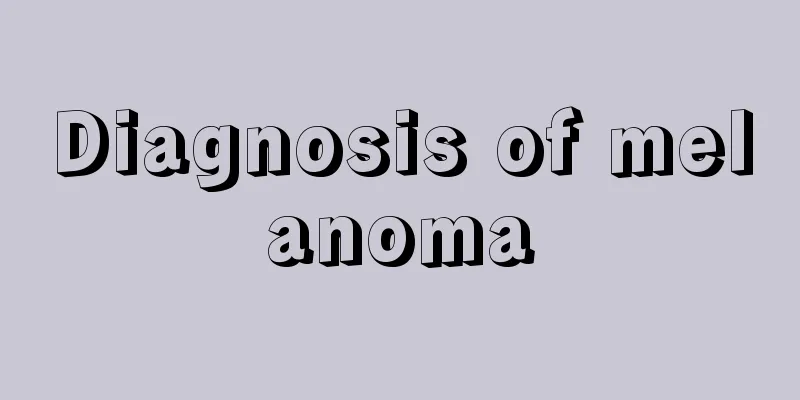Diagnosis of melanoma

|
Uveal malignant melanoma is the most common malignant intraocular tumor in adults. Its incidence ranks first among intraocular tumors abroad and second only to retinoblastoma in China. This tumor is highly malignant and easily metastasized through the bloodstream. It is more common in adults and is easily confused with many fundus diseases in clinical work. Therefore, it should be given full attention in ophthalmology clinical work. This disease is mostly found in middle-aged and older patients. The posterior pole of the eye is the most common site, and the incidence decreases as it moves forward. Diagnosis is based on: 1. Choroidal malignant melanoma, early symptoms include visual distortion, shrinkage, central dark spots, and changes in refractive power (continuous increase in hyperopia), which are also important clinical manifestations, sufficient to prove that there is a substantial tumor under the retina that is continuing to grow. Marginal choroidal melanoma may have no obvious symptoms in the early stage. After retinal detachment, the corresponding visual field defect will appear at the top. A very special point about marginal melanoma is that it will be combined with macular flat retinal detachment in the early stage of the disease. If the pupil is not dilated to examine the peripheral fundus in detail, it is easy to misdiagnose. 2. Since choroidal melanoma mostly originates from the ciliary nerve, fundus lesions may be accompanied by pupil abnormalities (the pupil in the corresponding part is unresponsive, difficult to dilate or not a perfect circle), or a fan-shaped area of decreased sensation may appear in the corresponding part of the cornea. 3. Scleritis is caused by blood flow obstruction or local tumor necrosis, which manifests as localized scleral congestion and proliferation of granulation tissue inside and outside the sclera. 4. Eye pain. The pain may be caused by secondary glaucoma or tumor necrosis-induced eye inflammation (uveitis or endophthalmitis). In a few cases, it may be caused by tumor infiltration or compression of the ciliary ganglion. 5. Anterior chamber or vitreous hemorrhage is caused by tumor necrosis. 6. Protrusion of the eyeball caused by the tumor spreading behind the eyeball. 7. Scleral transillumination test: It has great value in differential diagnosis. Inflammatory lesions, macular discoid degeneration, choroidal metastatic carcinoma or choroidal hemangioma can all be translucent, while in choroidal melanoma, it is generally opaque. 8. Scanning with B-mode ultrasound diagnostic instrument: B-mode ultrasound examination has important reference value and is more helpful for cases with opacity of refractive media. The tumor appears smooth and mushroom-shaped; there is an echo-negative area (acoustic shadow) behind the tumor on ultrasound, and the choroid is sunken. 9. Fluorescent fundus angiography (1) Dual circulation occurs simultaneously in retinal vessels and tumor vessels. (2) There is no fluorescence in the early stage, but the fluorescence increases in the late stage, showing a mottled morphology with mixed high and low fluorescence. 10. Isotope 32 phosphorus absorption test is positive 11. CT and phosphorus resonance examinations are also helpful for diagnosis. The above is the answer given by melanoma experts to you regarding melanoma. I hope it will be helpful to our melanoma patients. At the same time, you should pay more attention to melanoma. As the saying goes, if you are sick, you should treat the disease; if you are not sick, you should prevent yourself. Melanoma experts recommend that melanoma patients should go to a professional dermatology hospital for examination in time so that they can treat melanoma symptomatically. At the same time, preventive measures in life are also essential. |
<<: What are the diagnostic criteria for melanoma
Recommend
How to store fresh noodles
Many people in our daily lives love to eat noodle...
What are the methods to inhibit melanin nevus
Many people have large melanin spots on their bod...
What does Cha Jia Gong mean
The thyroid gland is a very important organ. The ...
What happens if I have chest tightness and shortness of breath due to breast cancer
What happens if I have chest tightness and shortn...
Can I eat fish after getting a face-lift injection?
Face-slimming injections are taken by many female...
Can people with stomach cancer eat stone frogs?
A stomach cancer patient asked: "Can I eat s...
Why are my hands shaking and I feel anxious?
Hand tremors and palpitations are relatively comm...
What is the most common age for nasopharyngeal carcinoma? What are the treatments for nasopharyngeal carcinoma?
The onset of nasopharyngeal carcinoma is to some ...
What are the benefits of opening windows for ventilation?
There are many benefits to indoor ventilation, an...
Right temporal bone fracture
Right temporal bone fractures are often caused by...
Beauty queen Da S has a secret recipe to get rid of freckles
As we all know, Big S has always been known as th...
Indications for various treatments for gastric cancer
Common treatments for gastric cancer include surg...
18-year-old heart rate
Although everyone is relatively familiar with the...
Do I need to fast to test uric acid?
Uric acid is generally used to test kidney functi...
How to effectively prevent lung cancer? Develop these good habits to prevent lung cancer
Lung cancer is a disease with a very high inciden...









